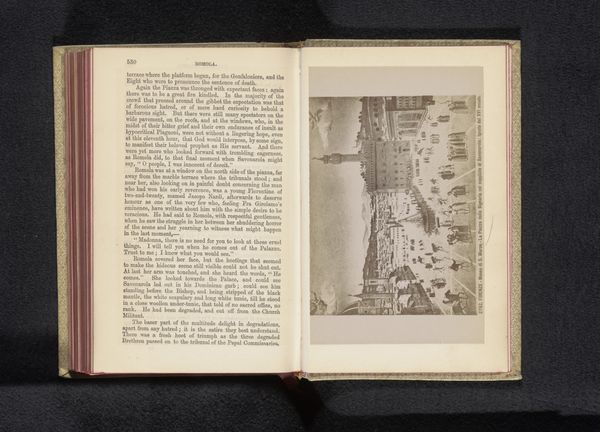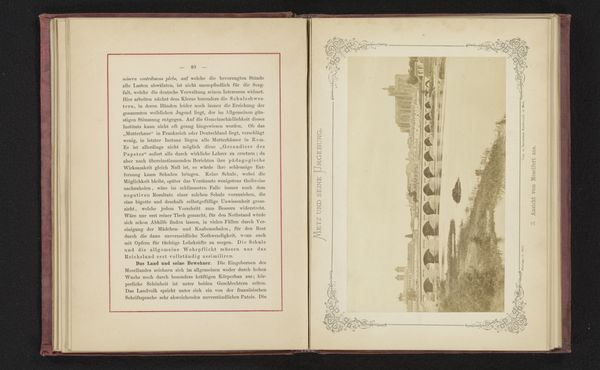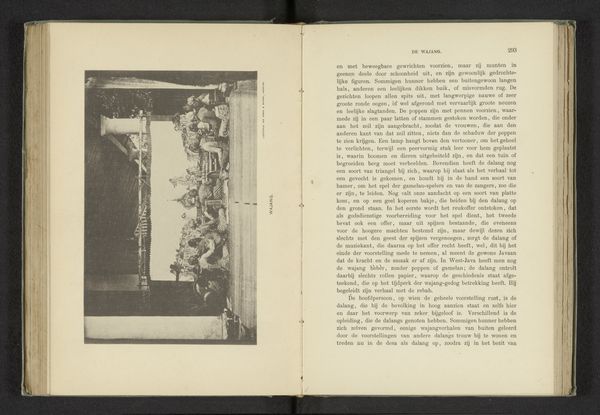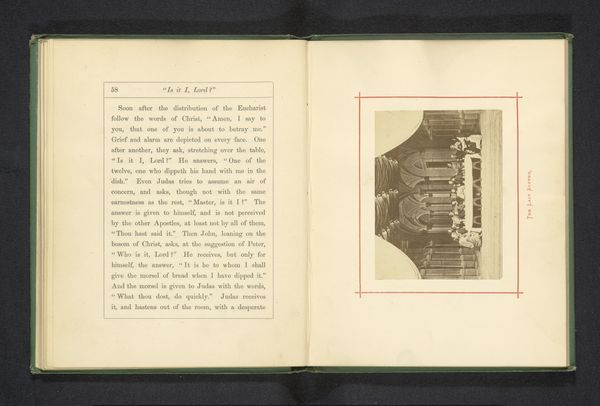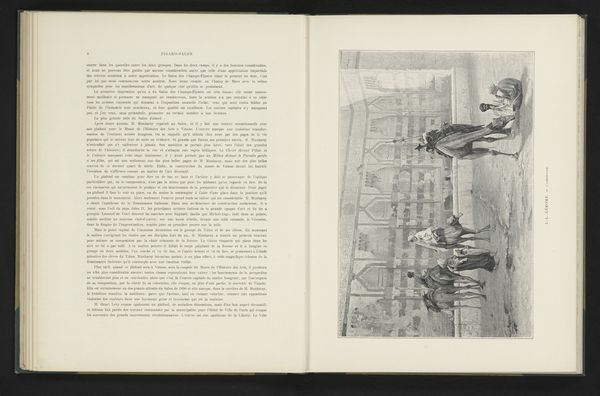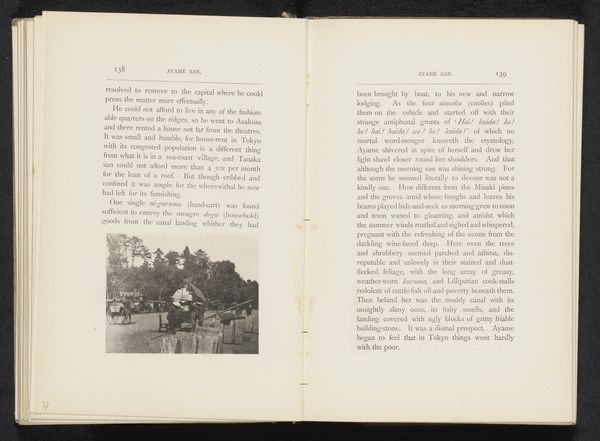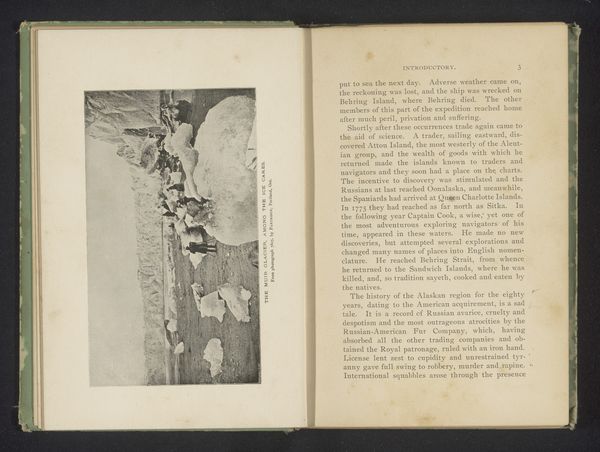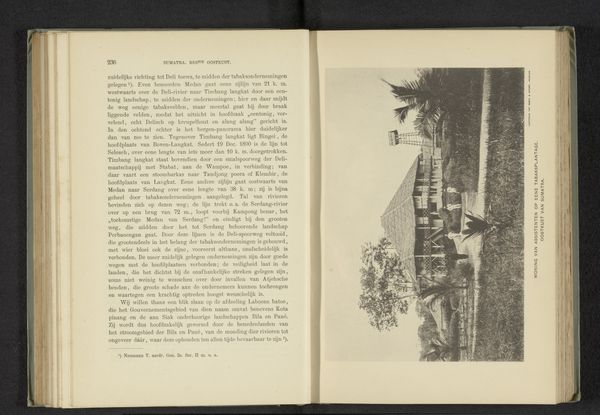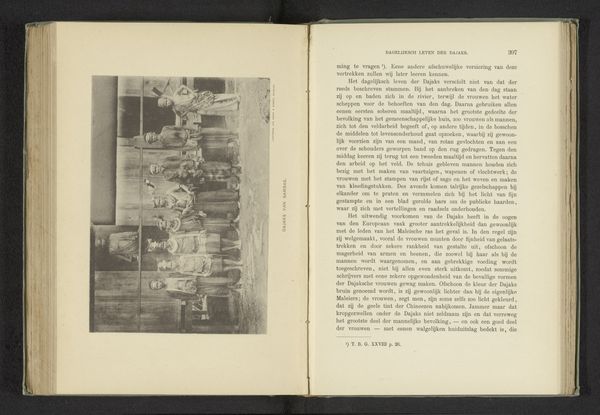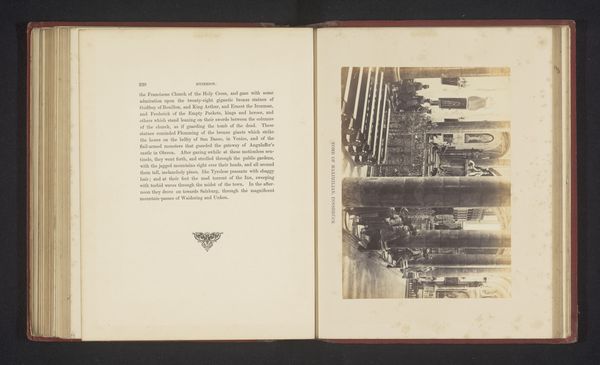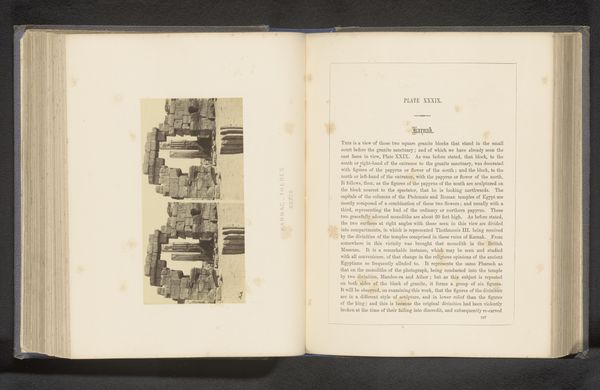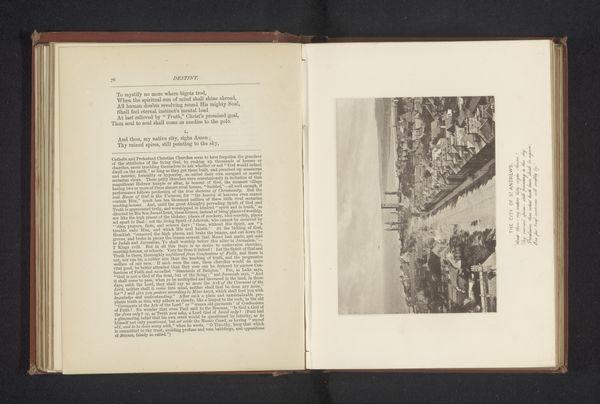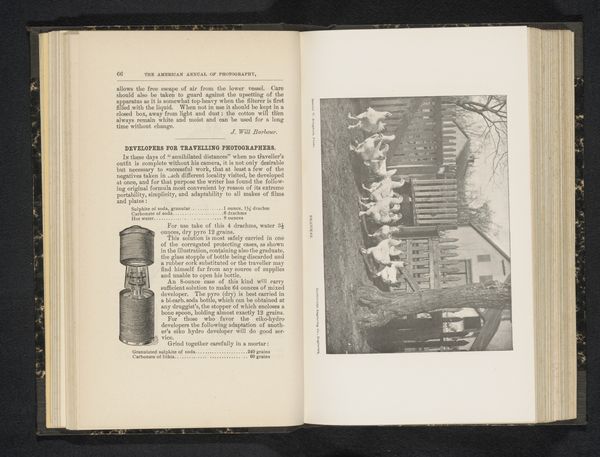
print, photography, gelatin-silver-print, albumen-print
# print
#
landscape
#
photography
#
gelatin-silver-print
#
cityscape
#
albumen-print
Dimensions: height 94 mm, width 142 mm
Copyright: Rijks Museum: Open Domain
Curator: Here we have Giacomo Brogi's "Ponte Vecchio in Florence," an albumen print created sometime before 1863. Editor: The silvery tones give this image a certain ethereal quality, a sort of timeless beauty. The high vantage point looking over the bridge seems significant in that it creates an interesting dialogue between architectural forms. Curator: Precisely. The architecture and urban landscape is central here. Brogi uses photography to carefully document the city. We can clearly make out details of the Ponte Vecchio's shops and the buildings lining the Arno River. Notice how the strong diagonal lines of the bridge intersect with the more horizontal expanse of the water. Editor: There is an almost clinical distance maintained by Brogi, as if he were meticulously creating a city plan as much as crafting a memorable image. The tonal range and high contrast adds visual texture, giving this sense of tangible monumentality. Is there any existing discourse surrounding Brogi’s compositional choices? Curator: Absolutely. The careful arrangement directs the eye toward specific areas and creates a very interesting play between depth and flatness. This particular choice is reflective of his commercial work at the time. Brogi’s aim, after all, was not just artistic documentation, but rather one that catered to growing tourism in Florence. Prints like these offered visitors visual souvenirs, so, in effect, these prints operated much like picture postcards still do today. Editor: The very muted palette and restrained detail emphasize form, thus creating a very formal effect—an image that conveys this sense of quiet observation. In so doing, a kind of contemplative mood is constructed. Curator: And its cultural role also provided the rising middle class with ways to collect views of places they visited and demonstrate taste through the collecting and display of cityscapes. These albumen prints thus performed crucial cultural functions within a burgeoning consumer culture. Editor: Yes, it does feel very constructed in a manner reflective of nineteenth century Italian sensibilities—perhaps a meditation on permanence and modernity? On reflection, what strikes me most is this balance Brogi strikes between objective record and a kind of sublime artistry. Curator: It is certainly a valuable testament to a specific moment in Florentine history.
Comments
No comments
Be the first to comment and join the conversation on the ultimate creative platform.
